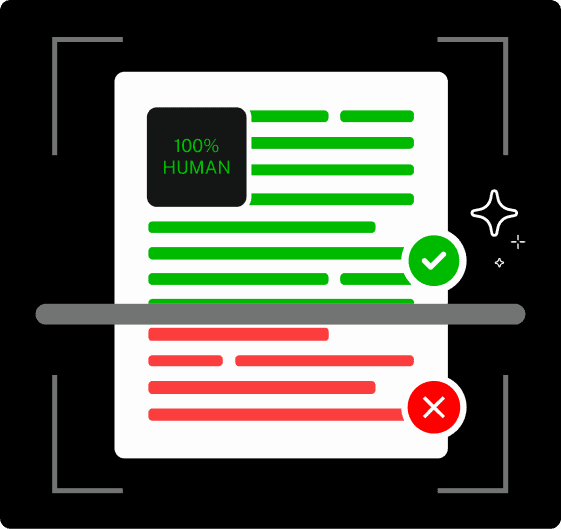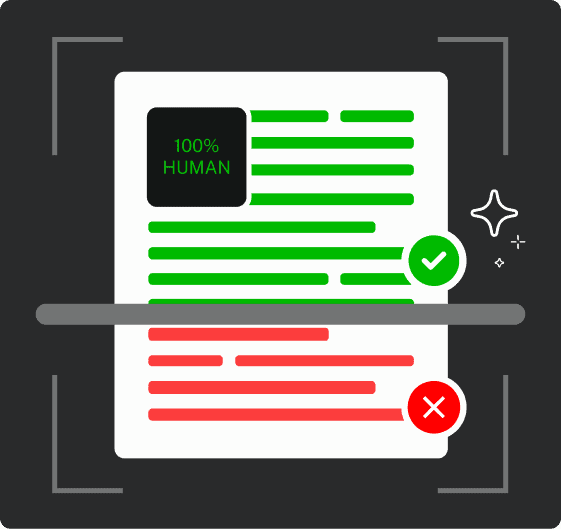Okay, real talk: how much time have we all wasted staring at a blank screen, desperately trying to come up with something to post? It’s a creativity killer!
Well, oftentimes, you can prevent it when you know your content pillars inside and out.
Content pillars are a blueprint with strong supporting columns around which everything else could be built.
These are your foundational topics, the go-to themes from which you can always draw inspiration.
In this article, I’ll explain what content pillars really are, how they differ from content clusters, how to develop your own pillars and give you real examples from brands that are doing it right.
Along the way, you’ll also find numerous tips and tricks to make sure your content pillars are rock-solid.
Let’s start with understanding what are content pillars.
What Are Content Pillars?
Content pillars are the broad topics that you consistently create content around.
You can think of them as your “main categories” or “big ideas” that reflect your brand’s values and purpose.
For example, if you run a health blog, your content pillars will be nutrition, fitness, and mental health.


Never Worry About AI Detecting Your Texts Again. Undetectable AI Can Help You:
- Make your AI assisted writing appear human-like.
- Bypass all major AI detection tools with just one click.
- Use AI safely and confidently in school and work.
These are the big, important topics you’ll keep coming back to create multiple pieces of content under each.
Content pillars also exist for social media as themes or categories you create content around on your social channels.
Without social media content pillars, your feed will feel all over the place with random memes one day, product promos the next, and then a recipe or motivational quote thrown in.
Examples of content pillars for social media include:
- Educational content
- User-generated content
- Behind the scenes
- Inspirational/motivational posts
- Promotional content
Types of Content Pillars
There are different types of content pillars that ensure you consistently give your audience the type of content they expect.
They include:
- Evergreen content pillars—The topics that don’t really change over time but stay relevant year after year. For example, if your niche is education, “study tips” could be an evergreen content pillar that’s always going to be in demand.
- Seasonal content pillars—The topics are relevant during certain times of the year. “Fall fashion trends” or “summer essentials” could be seasonal content pillars for a fashion blog.
- Product-focused content pillars—These are centered around the products/services you offer and drive conversions. If you’re a brand selling fitness equipment, a content pillar could be “home workouts with our gear.”
- Industry news and trends content: If you’re on top of the latest in your field, this pillar keeps your audience in the loop with what’s happening right now.
Content Pillars vs. Content Clusters
We just talked about content pillars, so you already know they’re the main themes or topics that everything you create revolves around.
Now, content clusters are a bit different.
Content clusters go into the specifics within your content pillars.
If, for example, your pillar for a health blog is nutrition, your clusters will be meal planning, high-protein diets, supplements, etc.
Every piece of content within a cluster is interconnected to create a web of detailed, valuable content that all ties back to the core topic and helps your audience explore a topic from every angle.
It also boosts your SEO, Google sees all the detailed authoritative content around a specific pillar and thinks, “Wow, this site knows its stuff!”
How to Create Content Pillars (Step-by-Step)
Creating content pillars isn’t as simple as picking a random topic and calling it a day.
It requires some thoughtful planning and a clear understanding of your audience.
Here’s a step-by-step blueprint of the process of how to create content pillars from scratch.
Step 1: Identify Your Core Themes
Without a clear understanding of your core themes, your content will end up scattered, and, frankly, ineffective.
Your content pillars should reflect your brand’s purpose and core values. Ask yourself:
- What message do I want to convey to my audience?
- What problems do I solve?
- What are the key beliefs I stand by?
Next up, dig up your audience’s needs and interests.
Look at social media comments and customer feedback and use Google Analytics or social listening tools to identify the topics that drive the most engagement.
Now brainstorm some broad categories that connect your values with your audience’s needs that your content will fall under.
Try to narrow them down to 3-5 core themes.
Any more, and it could get too broad. Any less and you won’t have enough variety.
Step 2: Research Keywords & Search Intent
When you’ve got your core themes locked down, you must figure out what your audience is typing into Google when they’re looking for content like yours.
Brainstorm keyword phrases related to your core themes.
Use Google Keyword Planner, SEMrush, Ahrefs, UberSuggest, or any SEO tool of your choice to understand the search volume and competition for each keyword.
Understand the keyword intent and why people are searching for something.
There are four types of intent:
- Informational: People want to learn (e.g., “how to start a fitness routine”).
- Transactional: People want to buy (e.g., “buy yoga mats online”).
- Commercial: People are comparing options (e.g., “best home gym equipment”).
- Navigational: People are looking for a specific site (e.g., “Nike running shoes”).
You will be creating your pillars around each type of intent.
Step 3: Build Your Pillar Pages
A pillar page is the main page on your site that acts as a launching pad for everything related to a particular topic.
Your pillar page should give a broad, high-level summary of the topic. It doesn’t need to go into too much detail (that’s what your content clusters are for), but it should cover all the essential points.
On your pillar page, include links to all the cluster content that explores specific subtopics.
For example, under your home workouts pillar, link to blog posts like “10-Minute Full Body Workout” or “How to Build a Home Gym on a Budget.”
Step 4: Create Supporting Content (Clusters)
The goal of your content clusters is to add value by providing actionable advice and detailed guides that make your audience’s lives easier.
Think about the specific questions or issues your audience has within each of your pillars.
If, for example, you create a cluster about home workout motivation, don’t just throw out a list of tips.
Try to create:
- How-to guides
- Case studies
Checklists - Resource lists
Each piece of content should be SEO-optimized, just like your pillar page.
Use the right keywords, include meta descriptions, ensure your content is mobile-friendly, include clear headings, bullet points, and visuals to optimize it.
Step 5: Interlink Strategically
The point of content clusters is to link them back to your pillar page.
When adding links, make them natural and relevant. Don’t just throw links in because you can.
Make sure they fit within the context of the content.
If you mention something in your post that’s related to another piece of content, link to it!
The words you use in your links (the anchor text) matter quite a lot.
Instead of linking with generic phrases like “click here,” use descriptive, keyword-rich anchor text that gives both readers and search engines a clear idea of what the linked page is about.
Don’t overdo it with links. Too many internal links overwhelm your readers and make your content hard to follow.
Focus on quality over quantity, and make sure the links you add are the ones that’ll truly help your audience.
Real Examples of Content Pillars
Let’s take a look at some content pillars examples of brands that really know how to nail their content pillars and how they use them to keep their marketing on point.
Patagonia

Patagonia’s pillars are rooted in sustainability, adventure, and activism, and they absolutely own them.
Patagonia is constantly talking about its eco-friendly products and sustainability practices.
Their “Worn Wear” campaign encourages people to buy used gear or repair old Patagonia items, not buy new ones.
The content regularly features outdoor adventures, like rock climbing or hiking.
They’ve also been at the forefront of environmental causes, supporting efforts like “Save Bears Ears” to protect public lands.
Starbucks
Starbucks is a masterclass in using coffee, community, and lifestyle as pillars to build a whole vibe.
Obviously, Starbucks shares tons of content around new coffee releases. They also share the process behind their drinks, like how beans are sourced or brewed.
Starbucks is big on building community, for example, in the annual #RedCupContest campaign, where people post their holiday cup photos for a chance to win prizes.
How AI Tools Can Help You Build Content Pillars
Creating content pillars is a massive time sink.
There are so many topics to choose from, it’s only easy to feel stuck, wondering how to organize it all without drowning in research or drafts.
Fortunately, Undetectable AI tools take all that pressure off with just a few clicks.
The AI SEO Writer speeds up pillar content generation by giving you a solid foundation to build on, so you’re not spending hours trying to come up with the perfect introduction or keyword-optimized headings.
If you have solid content that just needs a refresh or a tweak to fit into your pillar structure, you just need the AI Paraphrasing tool to keep things fresh without starting from scratch.
And when you’re stuck on what pillar themes to explore, use the AI Chat to brainstorm ideas and outline your content pillars instantly.
The AI Chat acts like your personal creative assistant to bounce ideas back and forth and help you pinpoint the most relevant topics for your audience.
After you’ve decided on your pillars, Undetectable AI Stealth Writer can be used for generating content that not only ranks but also reads like a human wrote it.
It produces high-quality content that’s both engaging and SEO-friendly.
Try out our AI Detector and Humanizer in the widget below!
FAQs About Content Pillars
How many content pillars should I have?
You should aim for 3-5 content pillars to keep your content focused and manageable without overwhelming your audience.
Are content pillars only for blogs?
No, content pillars are for all types of content, including social media, videos, podcasts, and email campaigns.
How do I measure content pillar performance?
To measure the performance of content pillars, track the engagement, traffic, conversions, and SEO rankings related to each pillar. You can use an analytics tool or a content marketing dashboard to track these metrics in one place.
Conclusion
Creating content pillars will feel like a lot of work at first, but once you’ve got them in place, it all starts to click.
When executed right, they’ll bring a sense of purpose and direction to your content creation.
And you can save yourself much more time if you try out Undetectable AI to generate content faster and more efficiently.
Use the AI SEO Writer to quickly create pillar content, the AI Paraphraser to refresh existing pieces, and AI Stealth Writer to make sure your content ranks without sacrificing quality.
Let Undetectable AI help you hit the ground running today!
